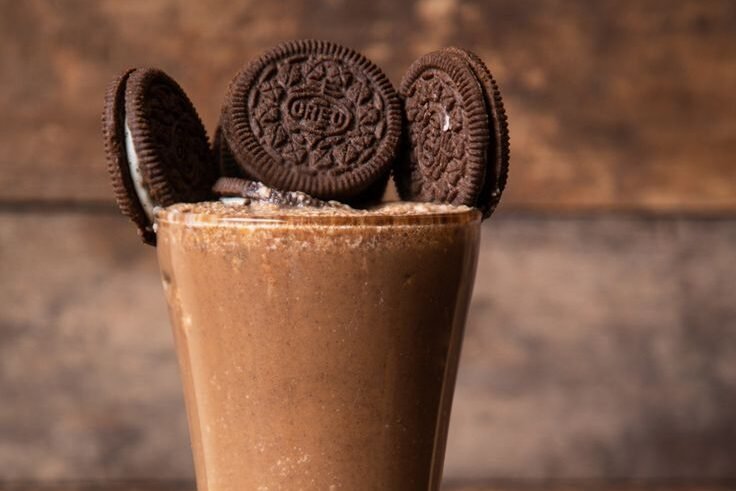How to Make Milk Sake at Home: A Creamy Twist on a Traditional Japanese Drink
Sake is often seen as a symbol of celebration, tradition, and craftsmanship in Japan. Whether you’re a casual drinker or a culinary explorer, there’s always something fascinating about how sake pairs with different flavors. Among these delightful variations, Milk Sake stands out for its smooth, creamy texture and unique balance of sweetness and umami.

But what exactly is milk sake? And how can you recreate this luxurious beverage at home using everyday ingredients?
In this blog, we’ll explore the rich tradition behind sake, walk you through how to make your own milk sake (both alcoholic and non-alcoholic versions), and even give you creative serving ideas to impress your guests.
🥂 What is Milk Sake?
Milk sake (sometimes referred to as miruku sake in Japanese fusion menus) is a creamy, lightly sweet beverage that combines the subtle taste of sake with the richness of milk. It can be served hot or cold and is often enjoyed as a dessert drink or even a cocktail base.
Milk sake isn’t traditionally common in Japanese culture but has gained popularity in modern Japanese fusion cuisine and bars. You’ll sometimes find it in trendy Tokyo izakayas or fusion restaurants where East meets West in the most delicious ways.
While it may sound unusual, the smoothness of milk blends beautifully with the dry, floral notes of sake, making for a well-rounded, velvety drink that can be both refreshing and comforting.
🍶 Understanding the Base: What Kind of Sake to Use?
Before we dive into the recipe, it’s important to understand that not all sake is created equal. Choosing the right base sake can make a big difference in flavor.
Here are the most suitable types for milk sake:
- Junmai Sake: Made with only rice, water, yeast, and koji, Junmai sake has a full-bodied flavor that pairs well with the richness of milk.
- Nigori Sake: This is unfiltered sake, often cloudy and slightly sweet, which adds body and texture to your milk sake.
- Honjozo Sake: A lighter option with a more fragrant note. It’s good if you want a subtler alcohol profile.
If you’re new to sake, start with a good-quality Junmai or Nigori from your local Asian grocery store or liquor shop.
🥛 Ingredients for Homemade Milk Sake (2 Servings)
Here’s a basic milk sake recipe using store-bought sake:
Ingredients:
- 1 cup (240 ml) sake – Junmai or Nigori preferred
- 1/2 cup (120 ml) whole milk – Substitutes: almond, soy, or oat milk
- 1 tbsp sugar – Or honey, maple syrup, or agave
- 1/2 tsp vanilla extract – Optional, for added aroma
- A pinch of salt – Optional, to enhance sweetness
- Ice cubes (for cold version)
This cozy version is perfect for cold evenings or relaxing nights.
Step-by-Step Instructions:
- Warm the Milk
- In a small saucepan, gently heat the milk with sugar and vanilla over medium-low heat.
- Stir continuously to avoid curdling and make sure the sugar fully dissolves.
- Do not let the milk boil — it should be warm, not scalding.
- Warm the Sake Separately
- Heat the sake in a separate saucepan or double boiler.
- Keep the temperature around 45–50°C (113–122°F). Avoid boiling to preserve the alcohol content and delicate flavors.
- Combine and Serve
- Pour the warm milk into a cup or mug.
- Gently add the warmed sake and stir.
- Garnish with cinnamon, nutmeg, or a dusting of matcha if desired.
🧊 Method 2: Chilled Milk Sake
Great for summertime or when you’re in the mood for a refreshing, cocktail-like drink.
Step-by-Step Instructions:
- Chill Your Ingredients
- Place sake and milk in the refrigerator for at least 1–2 hours.
- Prepare your glasses by chilling them in the freezer.
- Mix the Drink
- In a cocktail shaker or mixing glass, combine chilled sake, milk, sugar, and vanilla.
- Shake well or stir until the sugar dissolves.
- Serve Cold
- Pour into a glass filled with ice cubes or serve neat in a sake cup.
- Add a garnish — mint leaves, cinnamon stick, or even a twist of orange peel.
🍶 Non-Alcoholic Version: Milk Amazake
If you’re avoiding alcohol or want to make a family-friendly version, use amazake — a sweet fermented rice drink that’s naturally non-alcoholic (depending on the fermentation process).
Ingredients:
- 1 cup amazake (store-bought or homemade)
- 1/2 cup milk (dairy or plant-based)
- 1 tablespoon honey or sugar
- Optional: cinnamon or matcha powder for flavor
Instructions:
- Warm the amazake and milk in a saucepan (but don’t boil).
- Add sweetener and flavorings.
- Serve warm or chill and serve over ice.
This makes a great breakfast drink or a natural energy booster.

🍸 Variations and Flavor Additions
Milk sake is incredibly versatile. You can make it sweet, spiced, or even infused with fruit.
Here are some fun ideas:
1. Matcha Milk Sake
- Add 1 tsp of matcha powder to the milk while heating or shaking.
- Sweet, earthy, and vibrant green — a beautiful drink!
2. Strawberry Milk Sake
- Blend fresh strawberries with milk and sugar before mixing with chilled sake.
- Add crushed ice for a milk sake slush.
3. Coffee Milk Sake
- Add 1 shot of espresso to the milk before mixing with chilled sake.
- A Japanese take on a coffee cocktail!
4. Spiced Milk Sake
- Add cardamom, cinnamon, or cloves while heating the milk for a warm chai-inspired version.
🎉 When to Serve Milk Sake
Milk sake is perfect for:
- Dinner parties – A unique welcome drink or dessert beverage
- Holiday gatherings – Serve warm during Christmas or New Year’s
- Romantic nights – Add a little cinnamon and serve in fancy glasses
- Japanese-themed dinners – Pair with sushi, yakitori, or mochi
You can even bottle it in small jars and gift it to friends with custom labels!
🍽️ What to Pair Milk Sake With?
Here are some delicious pairing options:
| Milk Sake Flavor | Best Food Pairings |
|---|---|
| Vanilla or Original | Mochi, shortbread cookies, light sushi |
| Matcha | Green tea desserts, rice crackers |
| Coffee | Chocolate cake, tiramisu |
| Spiced/Chai | Almond biscotti, cinnamon rolls |
| Fruit-Infused | Cheesecake, fruit tarts |













